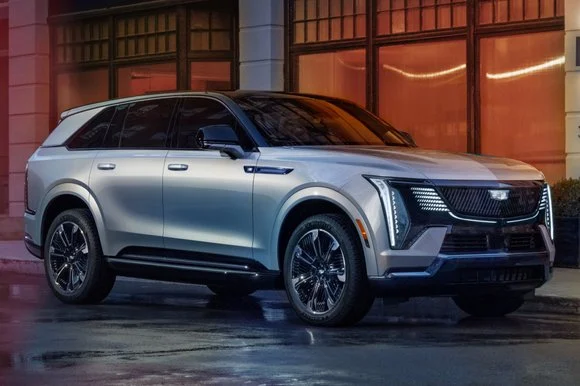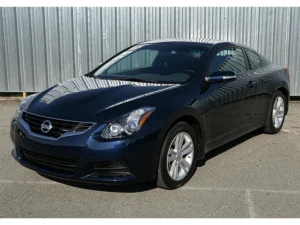Anticipation for the latest cars starts well before they hit the showroom floors, and for many enthusiasts, the release of a new model year is a significant event. If you’re eagerly waiting for the 2025 models, understanding the typical release timeline can help you plan your purchase and make informed choices.
Most manufacturers follow an established pattern for new releases, though slight variations exist depending on the brand, market strategy, or specific model changes. With 2025 models expected to come out soon, this guide explains the usual release schedule, factors influencing timing, and why these releases matter to buyers.
We’ll look into how the release process unfolds, what to expect with 2025 vehicles, and tips for those considering purchasing these fresh models. By understanding when these new cars arrive, you’ll be ready to choose the perfect one for your needs.
Typical Release Schedule for New Model Year Cars
Historically, new model year vehicles start appearing as early as the summer of the previous year. So, for 2025 cars, releases may start in mid to late 2024. This timeline allows manufacturers to introduce fresh models with the latest features, appealing to buyers who want the most current options.
Early Releases: June through September 2024
Brands that want to create excitement around their latest models may release in the early months of summer. This period provides a buffer before the peak sales seasons of fall and winter. Early releases are common for popular models that dealerships expect high demand for, allowing buyers to get ahead of the crowd.
Mainstream Releases: October to December 2024
Most 2025 models are released in the last quarter of 2024, marking the main launch window. Manufacturers choose this time to align with major auto shows and media coverage, which can increase buyer interest and awareness. This timeline also caters to holiday shoppers who might be interested in upgrading for the new year.
Late Releases: Early 2025
Some brands hold back on certain models until early 2025, often for limited edition or performance vehicles. These delayed releases cater to specific segments of the market and keep interest alive even after the initial rush.
Why Do Manufacturers Release New Cars Early?
Releasing new models before the actual model year provides a sales advantage for automakers. Here’s why manufacturers adopt this strategy:
Creating Hype and Generating Interest
Releasing cars early gives brands more time to generate excitement. The industry relies on events, press coverage, and sneak peeks to attract attention months before a full launch. This approach gives potential buyers ample time to research and prepare for their purchase.
Aligning with Major Events
Manufacturers often reveal new models during high-profile auto shows like those in Detroit, Geneva, and Los Angeles. These events allow carmakers to showcase features, interact with the public, and gauge interest.
Accommodating Dealer Inventory Cycles
Dealerships need time to prepare and distribute new models, so early releases allow them to update their showrooms and stock levels for smoother transitions from one model year to the next.
Understanding Different Release Patterns Across Brands
Not every brand follows the same release strategy, and many factors influence these decisions.
Luxury Brands
Luxury brands like Mercedes-Benz, BMW, and Audi may release their high-end models at different times, sometimes waiting until the start of the new model year. This staggered release approach can keep their models feeling exclusive and less affected by mainstream trends.
High-Volume Brands
Mainstream manufacturers, such as Toyota, Ford, and Honda, prioritize volume sales and tend to follow a more standardized release cycle. They often release their popular models, like sedans and SUVs, during the primary launch period to meet buyer demand and streamline inventory.
Electric Vehicles and Special Editions
EV manufacturers and those introducing special editions might release at off-peak times. Tesla, for example, operates independently from traditional schedules and releases new versions as they’re ready, often catching buyers by surprise with updates or new features.
What to Expect from the 2025 Model Year Vehicles
The 2025 model year is set to showcase some exciting advancements in vehicle technology, sustainability, and design.
Enhanced Technology
Many 2025 cars will come equipped with improved infotainment systems, seamless smartphone integration, and even advanced driver assistance features. AI-driven systems, voice control, and user-centric interfaces are likely to become standard in new models.
Expanded EV Options
The shift toward electric vehicles continues, and 2025 is expected to bring new EV options to mainstream and luxury markets alike. Expect longer battery ranges, faster charging capabilities, and more affordable electric models across multiple segments.
Sustainability and Eco-Friendly Features
Sustainability is a core focus, and many manufacturers are incorporating eco-friendly materials, from recycled interior fabrics to energy-efficient production processes. Hybrid and plug-in hybrid variants will likely also expand in availability.
Safety Innovations
Safety is always a priority, and 2025 models are expected to include further advancements in this area. Expect more refined collision detection systems, adaptive cruise control, and even predictive safety systems that anticipate hazards in real-time.
Tips for Buying a New Model Year Car
Purchasing a brand-new model can be thrilling, but timing and strategy matter. Here are some tips to ensure you make the best decision when 2025 cars come out.
Plan Your Budget Carefully
New models often carry a price premium, so factor in any additional costs. Check dealership offers and see if financing options align with your budget.
Research the Model’s Track Record
Even if it’s a 2025 model, vehicles from reputable lines usually have a consistent history. Research the previous year’s model to get an idea of performance and reliability.
Be Aware of Potential First-Year Glitches
When models introduce significant changes, the first production year might have minor issues that need addressing. Some buyers prefer to wait for subsequent production batches or years when these kinks are typically resolved.
How to Find the Best Deals on 2025 Models
With new releases, finding deals requires careful timing and negotiation.
Timing Your Purchase
If you want a 2025 model, waiting until the initial excitement dies down can lead to better deals. Dealerships often offer incentives on previous model years as they make room for new arrivals, which can influence prices on the 2025 models as well.
Leverage Trade-In Offers
Trade-in offers can be an effective way to offset the cost of a new model. Research your vehicle’s current trade-in value to make an informed decision when negotiating with dealers.
Look for Manufacturer and Dealer Incentives
Manufacturers sometimes offer launch incentives, especially during holiday sales periods. Keep an eye out for these as they can provide extra savings on newly released models.
Pros and Cons of Buying a 2025 Model Car
For prospective buyers, it’s essential to weigh the benefits and potential drawbacks of buying a brand-new model.
Pros:
- Latest Technology: Newer models often come with upgraded technology that enhances convenience, safety, and entertainment.
- Improved Resale Value: Buying a newer model year may give a slightly higher resale value than an older model.
- Increased Reliability: With fresh production cycles, new models are generally in peak condition, often benefiting from the latest design improvements.
Cons:
- Higher Initial Cost: Newer models typically have a premium price, which can be a factor for budget-conscious buyers.
- Potential Bugs: If a model has undergone significant updates, first-year models can occasionally have minor issues that are resolved in following years.
Popular 2025 Models to Watch For
Excitement is building around several anticipated 2025 releases. Some notable mentions include:
- Ford Mustang: An iconic model with rumored performance updates for 2025.
- Tesla Model 3 and Model Y: Expected updates in battery performance and interior features.
- Toyota Camry: A perennial favorite, the 2025 model is expected to include safety upgrades and possible hybrid options.
- Honda CR-V: Known for reliability, it’s expected to have improved features for family-friendly use.
Where to Follow Upcoming 2025 Releases
Staying updated on 2025 models is easy with online resources and automotive news.
- Automaker Websites: Official websites provide press releases, specs, and release schedules.
- Automotive News Outlets: Outlets like MotorTrend, Car and Driver, and Edmunds provide in-depth coverage.
- Local Dealerships: Dealers often receive advanced notices on model availability and can help with test drive arrangements.
Conclusion
2025 models will bring a fresh wave of innovation, providing car enthusiasts and buyers with modern features, enhanced safety, and eco-friendly options. Understanding the release timeline and planning your purchase can help you navigate the automotive market confidently.
By staying informed on model availability, industry trends, and dealership incentives, you’ll be well-prepared to choose the perfect 2025 vehicle for your needs. Whether you’re aiming for the latest tech or looking for a dependable family car, the 2025 models are likely to offer exciting choices.




